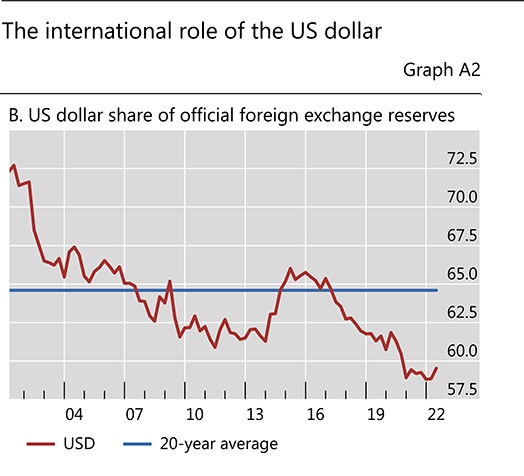The U.S. dollar currently accounts for only 59% of all foreign exchange reserves from around the world. The share of foreign exchange reserves in the U.S. dollar remained staggeringly high at 71% in FY 2002-03. However, the USD began to decline thereon accounting for only 59% of all foreign exchanges in 2023. That’s a drop of 12% in 20 years and the BRICS alliance is now accelerating the process of dethroning the U.S. dollar by convincing other developing countries to trade in local currencies.
Read here to know how many financial sectors in the U.S. are being affected due to the U.S. dollar decline.


BRICS is convincing developing countries from Asia, Africa, and South America to end reliance on the U.S. dollar. If the de-dollarization process continues, foreign exchange reserves in the USD could fall much lower in the next 20 years. Therefore, BRICS can reshape the global power and change the financial order in the next two decades.
Also Read: Which European Countries Want To Join the BRICS Alliance?
BRICS Aiming To Dethrone the U.S. Dollar


The BRICS alliance has already been successful in convincing other countries to trade in local currencies. France settled an LNG gas trade with China by paying the Chinese Yuan.
Also Read: BRICS: 2 Countries Express Disinterest in Expanding the Alliance
Argentina allowed companies to settle imports and exports using the Chinese Yuan and not the U.S. dollar. Iran, Iraq, and Pakistan, among other countries, have begun trading in native currencies to strengthen their local economies.
The development could add pressure on the U.S. dollar if more countries ditch the currency for cross-border remittance. The U.S. will have no means to fund its deficit leading to turmoil in the American economy. The move could lead to hyperinflation if not brought under control in the next two decades.
Also Read: Russian Deputy Prime Minister Makes Big Announcement on BRICS Currency





